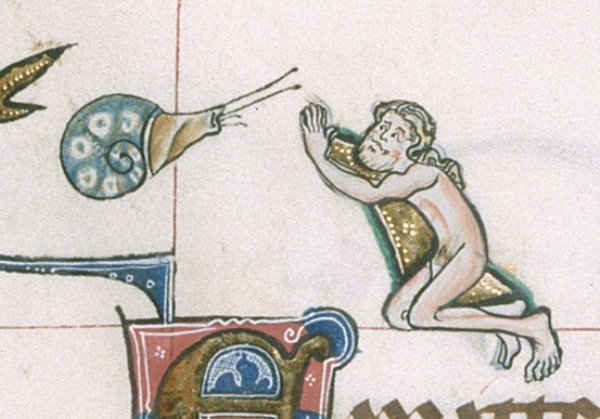

–The lyrics I translated as follows down below: “This song parodies the absurdity of courtly service by describing a list of requests from his lady.

His song ‘Steter dienest der ist gv°t’ ridicules classic Minnesinger poetry, in essence describing almost a shopping list for crusades to the Holy Land, and how –despite the tasks in each verse are getting more and more impossible– the singer “wont be easily disheartened”. The ‘Deutschhauskirche’ in Würzburg alledgedly possesses the tombstone of Siboto III of Tanhusen. 1320) depicted wearing the Teutonic Order habit, suggesting he might have fought in the Sixth Crusade. von Tannhausen’)– is in the ‘Codex Manesse’ manuscript (from ca. after 1265AD, his real identity possibly ‘Siboto III. not the dude from the Wagner opera, but the ‘real’ one (like myself from the Bavarian Nordgau, b. Anthony de Lucy, 3rd Baron Lucy, however, sent a letter from London to his wife, letting her know that he and some friends lent some money and would be about to set sail for a crusade against the pagan (real) Prussians (cf.: “Northern Crusades”), where he apparently was killed in in 1368AD, in what today is Lithuania (cf. Later, as crusades to the Holy Land were not longer possible, e.g. London’s Lombard Street originally was occupied by “Lombard” bankers, who possibly operated a little later than the ones ridiculed in the books of hours. Still, a ‘Lombard credit’ is the granting of credit to banks against pledged items, mostly in the form of securities or life insurance policies. While the hero is here riding on one, it might be a symbol for armour.Ĭontrastingly, when on a crusade to the Holy Land, knights were dealing with sluggish ‘Lombard’ finance intermediates. Medieval drollery knows all kinds of motifs, and particularly for the snails and slugs different explanation have been given. That badge was indeed clearly mounted onto something like a leather belt, and as there is indeed only a single “nubbin”, that scraping follows a function. “The number Thou shallst count is THREE!” :yes: His Norman style helmet is his only armament. The pose and position of the shell over the animal is comparable to the recently-discovered mount, although the knight in the mount has his hands clasped in prayer, not wielding shield and lance.

The Aspremont Psalter-Hours, now in the collection of the National Gallery of Victoria in Australia features a marginal illustration of a knight at arms emerging from a snail shell mounted on the back of a dog. The knight-snail-goat has that same elision, where the spirals of the shell are placed where the curled horns of a ram would be. The chimeric imagery often evoked snail shell shapes, as in the curled tail of a serpent. Other variants merge animals and men or feature hybrid animals or animal combatants in place of the knights. Sometimes the knight is on his knees in capitulation before his snail foe. Sometimes a woman begs the knight not to take this terrible risk.

Knights, mounted and on foot, armed to the teeth with swords, lances and bows, charge a snail that faces them with antennae extended. They weren’t references to anything specific in the text, but rather satirical references to cowardice in a monde renversé (world upside down) style ie, the little, weak, slow snail treated as a valiant, sometimes even victorious chivalric opponent. The motif of a knight in combat against a snail and its many variants were common in the margins of illuminated manuscripts from Arthurian tales to psalters. The mount dates between 12, a time when scenes of knights and snails had a burst of popularity in the art of France, Flanders and England. It was unearthed by a metal detectorist in a field near Pontefract last September. It is solid silver and its shaped and molded front is gilded with some wear on the top of the man’s head on the center of the shell. The object is less than an inch long, has flat back and a short rivet which indicates it was mounted to something thin and rigid like a leather belt.
#Medieval manuscripts snails portable#
A silver-gilt praying knight emerging from a snail shell onto a non-equine quadruped, likely a goat, is one of the stand-out pieces of this year’s British Museum annual treasure report on Portable Antiquities Scheme finds.


 0 kommentar(er)
0 kommentar(er)
